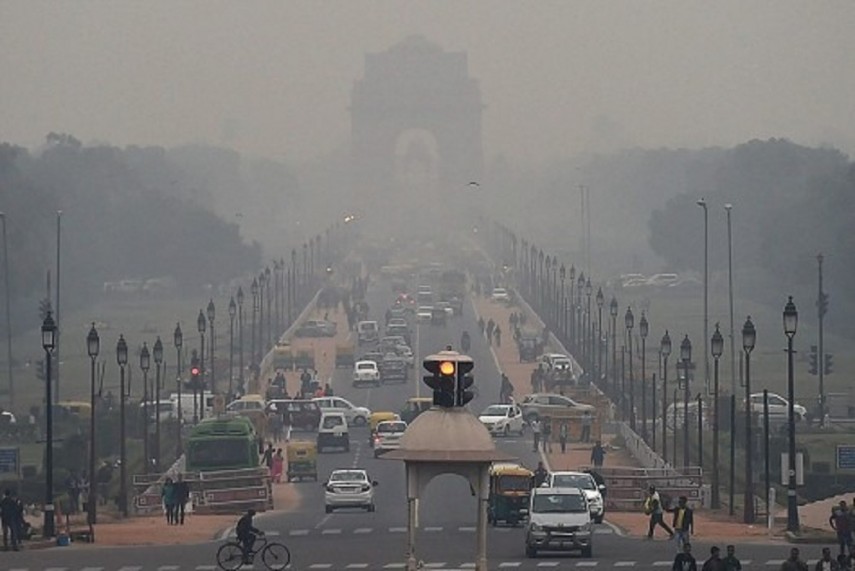The national capital’s air quality slipped back into the very poor category again after recording a marginal improvement over the last 24 hours.
Officials at the India Meteorological Department said the air quality had improved on Monday with high wind speed aiding dispersion of pollutants. However, stagnant night-time conditions led to accumulation of pollutants.
The city recorded an air quality index (AQI) of 332 at 10 am. The 24-hour average (AQI) was 293, which falls in the “poor” category.
It was 364 on Sunday, with stubble burning contributing 40 percent to Delhi’s pollution.
An AQI between 0 and 50 is considered ‘good’, 51 and 100 ‘satisfactory’, 101 and 200 ‘moderate’,201 and 300 ‘poor’, 301 and 400 ‘very poor’, and 401 and 500 ‘severe’.
The Air Quality Early Warning System for Delhi said a significantly large number of fires were observed over Punjab, Haryana, Uttar Pradesh and Madhya Pradesh on Sunday which is likely to impact the air quality in Delhi-NCR and northwest India on Tuesday and Wednesday.
According to the Ministry of Earth Sciences’ air quality monitor, SAFAR, the share of stubble burning in Delhi’s pollution was 16 percent on Monday.
It had soared to 40 percent on Sunday, the maximum so far this season.
Stubble burning accounted for 32 percent of Delhi’s PM2.5 pollution on Saturday, 19 percent on Friday and 36 percent on Thursday.
Last year, the farm fire contribution to Delhi’s pollution had peaked to 44 percent on November 1, according to SAFAR data.
According to the India Meteorological Department, the predominant wind direction was northwesterly and the maximum wind speed was 8 kilometers per hour on Tuesday.The city recorded a minimum temperature of 10 degrees Celsius, the lowest in the season so far.
Calm winds and low temperatures trap pollutants close to the ground, while favourable wind speed helps in their dispersion.
According to the Air Quality Early Warning System for Delhi, the city’s ventilation index a product of mixing depth and average wind speed was expected to be around 8,000 meter square per second on Tuesday favourable for dispersion of pollutants.
Mixing depth is the vertical height in which pollutants are suspended in the air. It reduces on cold days with calm wind speed.
A ventilation index lower than 6,000 sqm/second, with the average wind speed less than 10 kmph, is unfavourable for dispersal of pollutants.
In a bid to control pollution, the Delhi government has also said that only green firecrackers can be manufactured, sold and used in the national capital in accordance with a 2018 Supreme Court order.
‘Green crackers’ are not as polluting as the conventional types of firecrackers and they contain at least 30 percent less particulate matter such as Sulphur Dioxide and Nitrogen Oxide.
Fireworks can take place between 8 pm and 10 pm only on festivals like Diwali and Gurpurab etc. On Christmas eve and New Year eve, it would be from 11:55 pm till 12:30 am only, according to the Delhi Pollution Control Committee.
The National Green Tribunal has also issued notice to the Centre, Central Pollution Control Board, and the governments of Delhi, Haryana, Uttar Pradesh and Rajasthan, asking if crackers could be banned between November 7 and November 30 in the interest of public health and environment.


